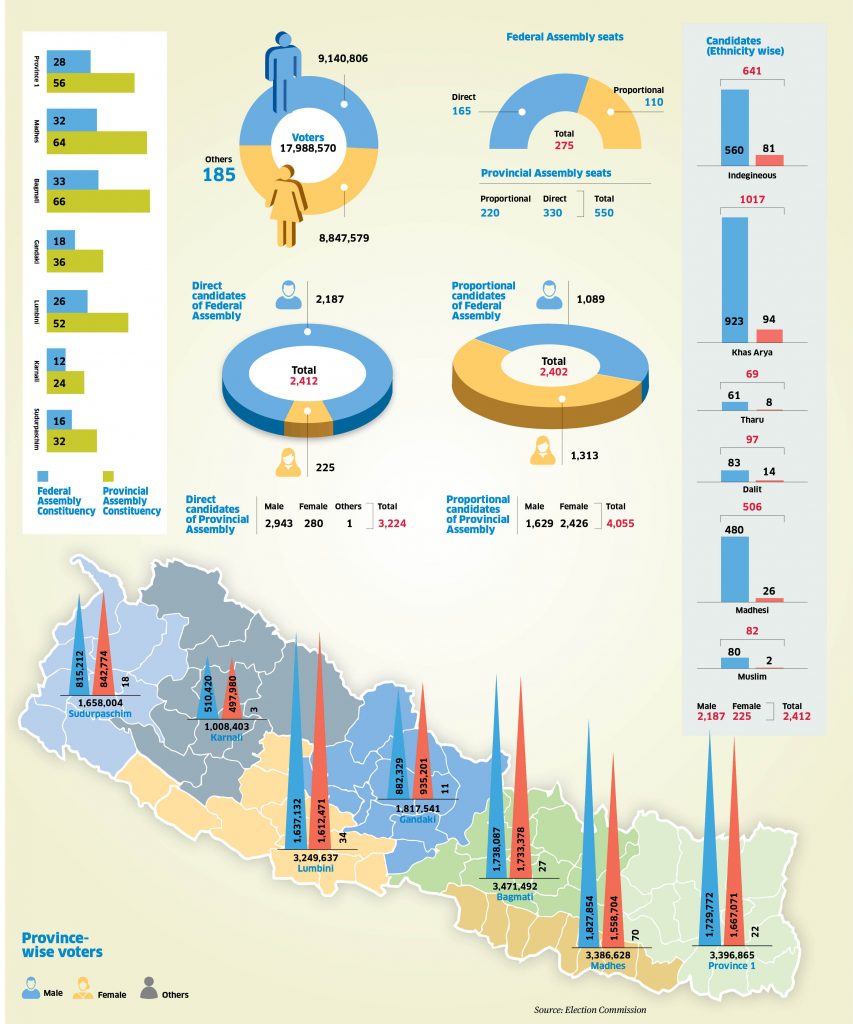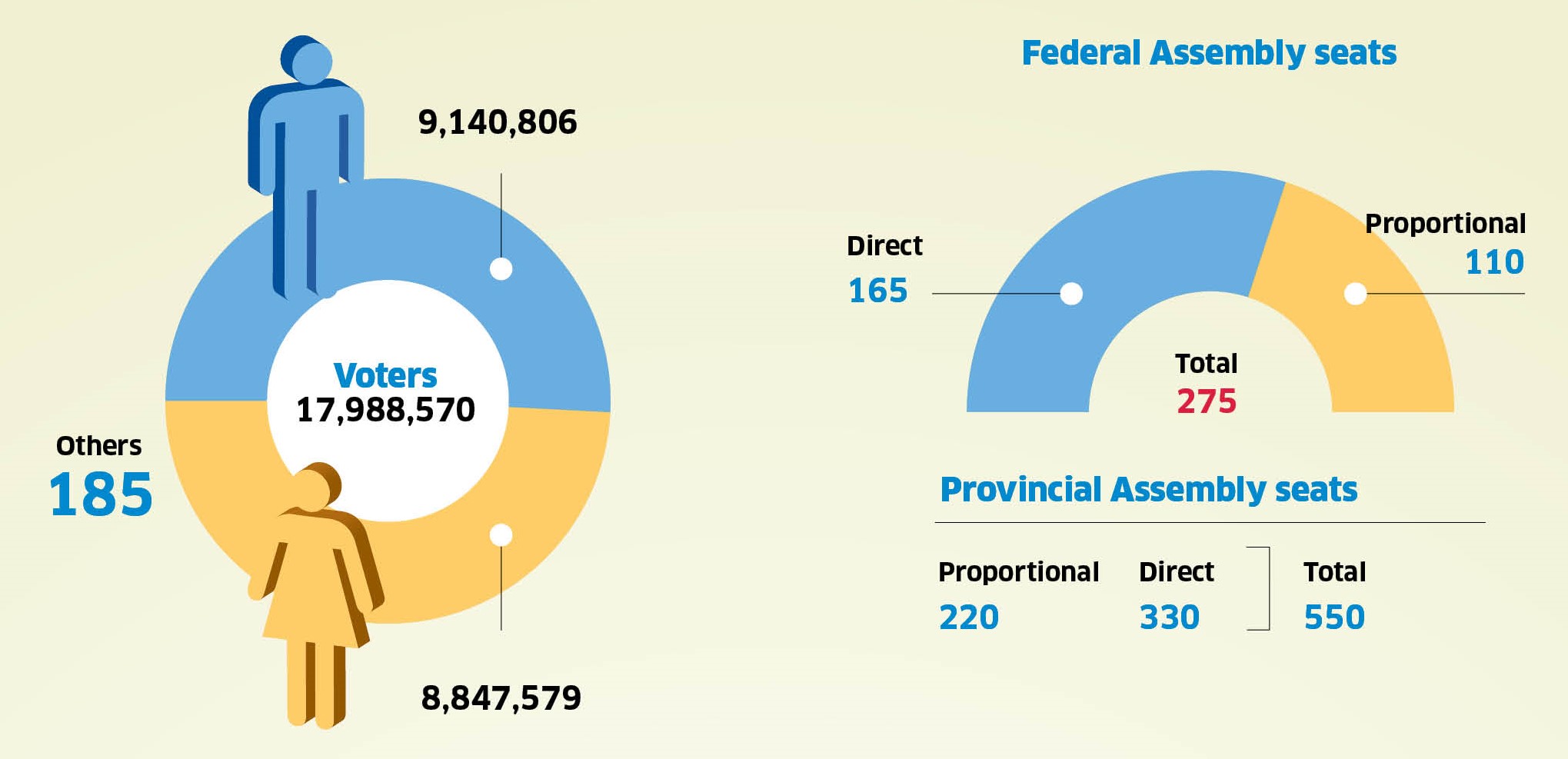Over 12,000 candidates are contesting the elections for 825 seats in federal and provincial elections. According to the Election Commission, 1,7985,570 voters will exercise their right to vote. Morang district has the highest number of voters for the elections with 735,525 people on the voter's list in six constituencies. The least number of voters is in Manang district with a total of 6,779 in a single constituency.
Violations of the election code of conduct have increased as the election draws near. So far, 71 complaints have been filed at the commission. The Nepal Police has deployed a large number of security personnel across the country to ensure that the elections are held in a peaceful environment. The police have prepared to mobilize 186,693 security personnel in all seven provinces.
According to the integrated security plan, along with the Nepal Police, there are 115,000 temporary police. The Nepali Army is also ready to mobilize 75,000 security personnel. Similarly, the Armed Police Force (APF) is set to mobilize around 35,000 security personnel. The responsibility of APF is to provide security at the Chief Electoral Office, Election Office, and District Election Office. 
It’s estimated that Rs 24.11bn will be spent on the Nov 20 elections. The security forces have asked for Rs 16bn. The Ministry of Finance, however, has agreed to spend Rs 8.822bn on security.
For the first-past-the-post election system of the House of Representatives and the Provincial Assembly, the ballot paper has the election symbol and other details printed in red on a white background. While in the proportional election system, the ballot paper has black color printed on a white background.
Each voter has to vote on four separate ballot papers. There are two ballots (first-past-the-post and proportional) for the House of Representatives and two (first-past-the-post and proportional) for the Provincial Assembly.












